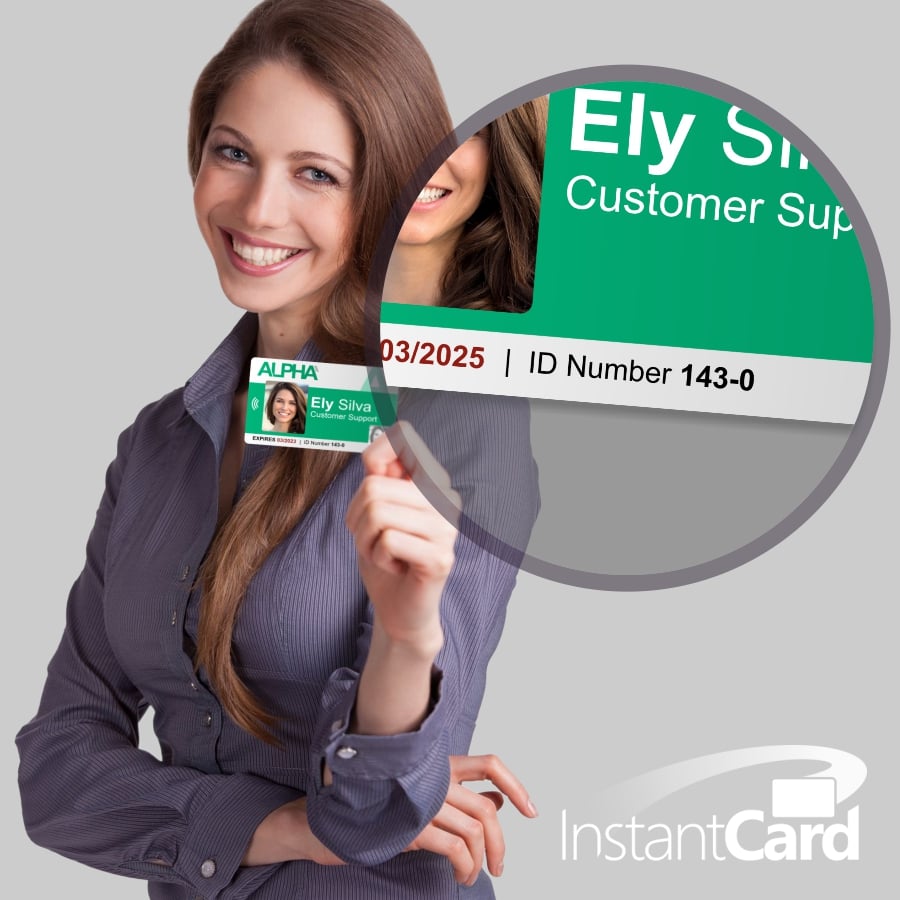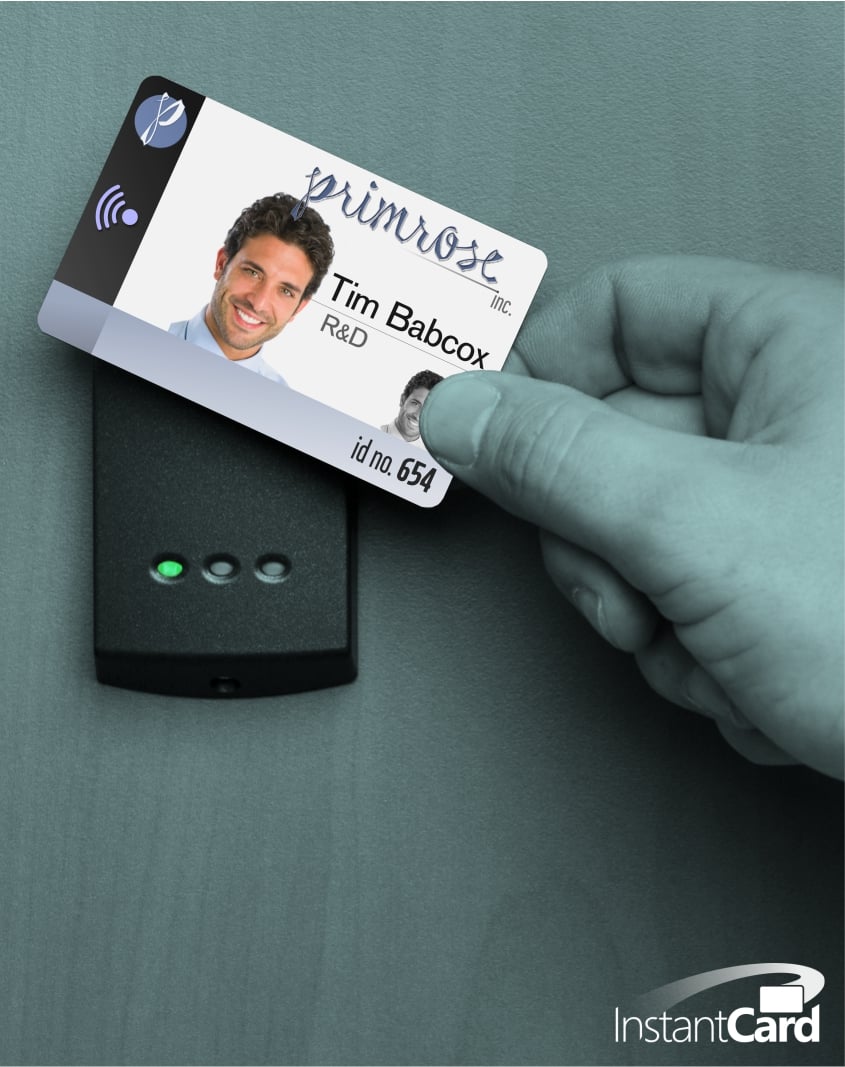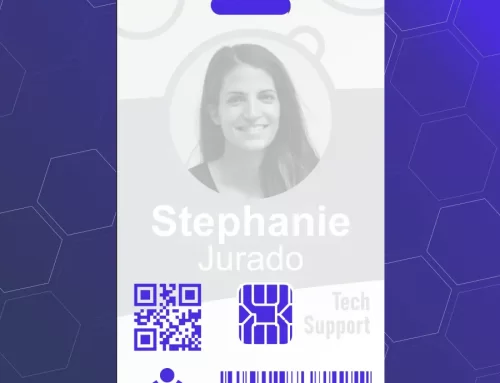 On most sample ID cards on our site, you’ll notice an employee ID number. And, although having an employee number is extremely common, we are sometimes asked by (typically smaller) companies if they need to put such an identifier on their Employee IDs. Of course, an employee ID number is not necessary on your employee ID badges, but we still recommend it. And, if you’re a small company, it’s best to start implementing this employee “best ID practice” now, so that you have a good system in place for when you grow.
On most sample ID cards on our site, you’ll notice an employee ID number. And, although having an employee number is extremely common, we are sometimes asked by (typically smaller) companies if they need to put such an identifier on their Employee IDs. Of course, an employee ID number is not necessary on your employee ID badges, but we still recommend it. And, if you’re a small company, it’s best to start implementing this employee “best ID practice” now, so that you have a good system in place for when you grow.
What is an employee ID number?
An employee ID number is usually assigned to every staff member within an organization. These numbers are often used in payroll and avoid confusion over changed names, etc. Typically, these ID numbers are assigned by HR and never change for a given employee, even if they change roles. Employee numbering systems must generate a unique number, so there is no confusion whatsoever between team members. Most systems, including the InstantCard badging service, allow employee ID numbers to be alpha-numeric, meaning any combination of letters and numbers.
Some companies add a prefix to the employee ID number to designate, for example, which division of the company they belong in. However, this generally assumes that employees will never change divisions. But in general, you should ensure that the same employee ID number is used in various systems, such as HR, payroll, benefits, time & attendance, etc.
Are there benefits to having Employee ID numbers?
Benefits of employee ID numbers include…
- Avoiding payroll errors.
- More easily implementing secure access control.
- Consistency across disparate systems and cloud services.
- Unequivocal legal reporting to government authorities, tax agencies, banks, retirement programs, etc.
- Facilitating automated time tracking and attendance.
- Avoiding name mix-ups in bookkeeping. (e.g., having an employee change his or her name, or when two employees share the same name)
Are there rules for employee ID numbers?
As employee ID numbers are often public facing, you should avoid using any sensitive information to generate them, such as the last four digits of the employee’s SSN. Other than that, there aren’t any hard and fast rules, so long as the numbers make sense within your organization. You may use a mixture of letters and numbers to get some extra information in the ID number.
Here are a few ideas for getting the most out of your employee ID numbering scheme:
- Use a two-letter code at the beginning of the ID number to indicate the employee’s department or division.
- Never re-use the employee ID number of a staff member who has been terminated. Always generate a fresh, never-used number for new employees.
- Append a “-[n]” to the end of the employee ID number, where [n] is the number of additional ID badges printed for that employee. (e.g., an employee ID of “7659-0” would mean that only one employee ID was issued for the employee with ID number “7659”.) This is especially useful when badges are being used for access control.
- Some companies issue a Temporary employee ID number, designated by a “T” before or after the number, to new employees for use until they have been assigned a permanent number.
- Include a check digit at the end of the ID number to avoid someone spoofing an ID number (particularly on an ID card).
- We recommend that employee ID numbers be between 4 and 8 digits, so they are neither too short nor too long.
- Pre-assign a series of numbers for visitor ID badges. This way you can still track where visitors access, without having to print a new visitor badge every time there’s a visitor.
How to use employee ID numbers with your ID cards.
 Not only do employee numbers on ID badges make your IDs look more professional, but they can also be beneficial to your ID badge program. There may be a need for recording attendance at, for example a professional training session, which would be made easier by having a unique employee ID number. Or it may be required that this number is recorded in a visitor log when the employee is visiting other sites or locations. Also, the printed number on the badge may correspond to the number which is encoded in the magstripe, barcode, or QR code on the card, allowing another form of auto-identification.
Not only do employee numbers on ID badges make your IDs look more professional, but they can also be beneficial to your ID badge program. There may be a need for recording attendance at, for example a professional training session, which would be made easier by having a unique employee ID number. Or it may be required that this number is recorded in a visitor log when the employee is visiting other sites or locations. Also, the printed number on the badge may correspond to the number which is encoded in the magstripe, barcode, or QR code on the card, allowing another form of auto-identification.
“How do I find my employee ID number?”
If every employee’s ID number is printed on their badge, then you don’t have to worry about dealing with this (all-too-common) question. We already have too many numbers to remember in our complex day-to-day life, this simplifies things just a little more for your team members.
Access Control with ID cards
Using employee ID cards for access control is an excellent idea. You can have your system log the associated employee ID with every use, so there’s no ambiguity when it comes to who’s entering a given room or area. Most access control systems, in fact, require you to enter the employee ID number of the staff member to whom the RFID badge is issued. This creates a correspondence in the access control data base between the RFID code, the employee ID, and the name of the card holder.
Time tracking and attendance
Your employee ID badges, with their embedded employee ID number, can easily be set up to work with timeclocks. Systems like TapTrack can be set up to receive the number through NFC (near-field communication). Most time and attendance systems, like Kronos, depend on the employee ID for unique identification. With appropriate timeclocks, or even NFC phones, you can use your IDs to track work times on remote worksites.
In conclusion
If you’re a small company, it’s never too early to start issuing employee ID numbers. It may seem silly when you only have 3 employees, but you’ll be thankful to have a system already in place when you grow to 100+ employees. We always recommend that small companies implement big-company systems wherever possible to allow for growth and development.
The easy-to-use InstantCard templating system makes it easy to add employee ID numbers to any ID badge template. We support any format, and as mentioned above you can also encode it in bar codes, mag stripes, etc. So, even if you don’t have an immediate need, you’re set up for when you find an application.
If you have any other questions, don’t hesitate to contact us, and we can figure out a future-proof practice that is best for your organization.



